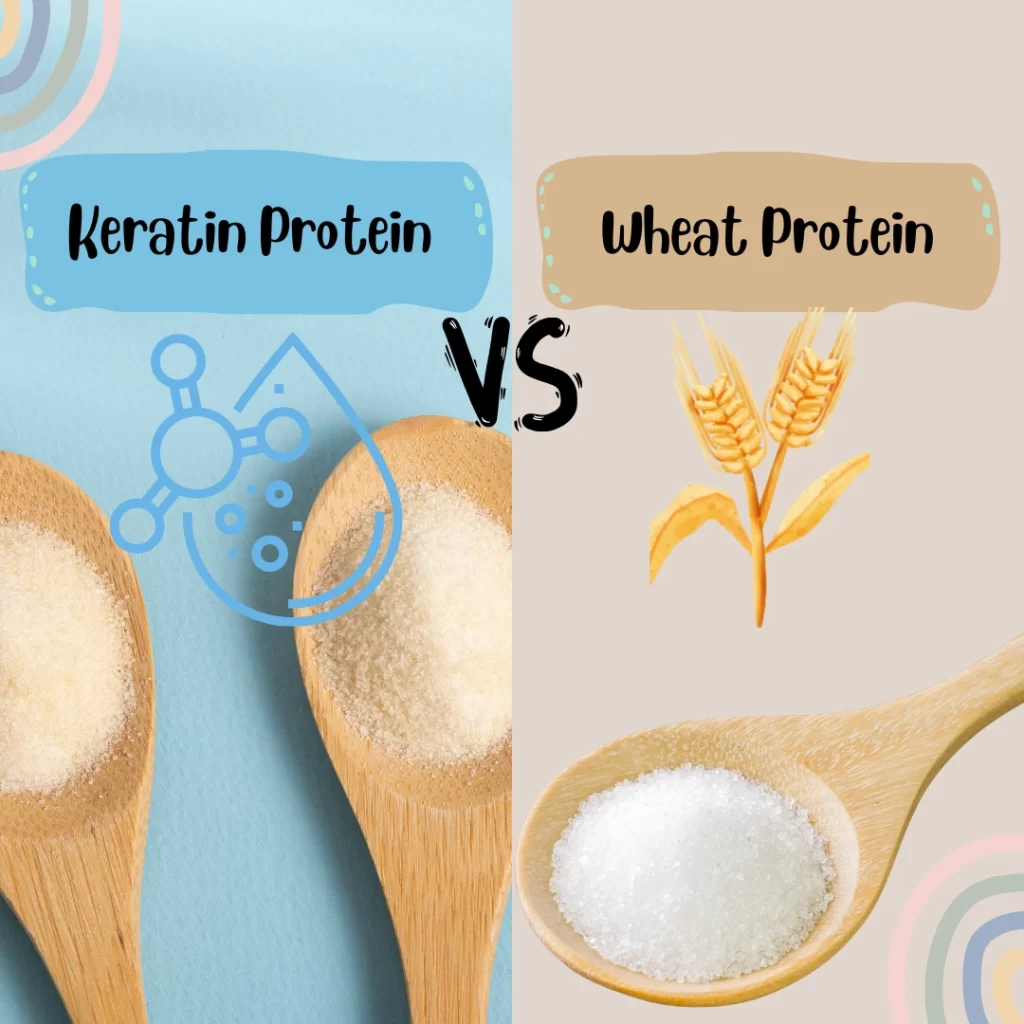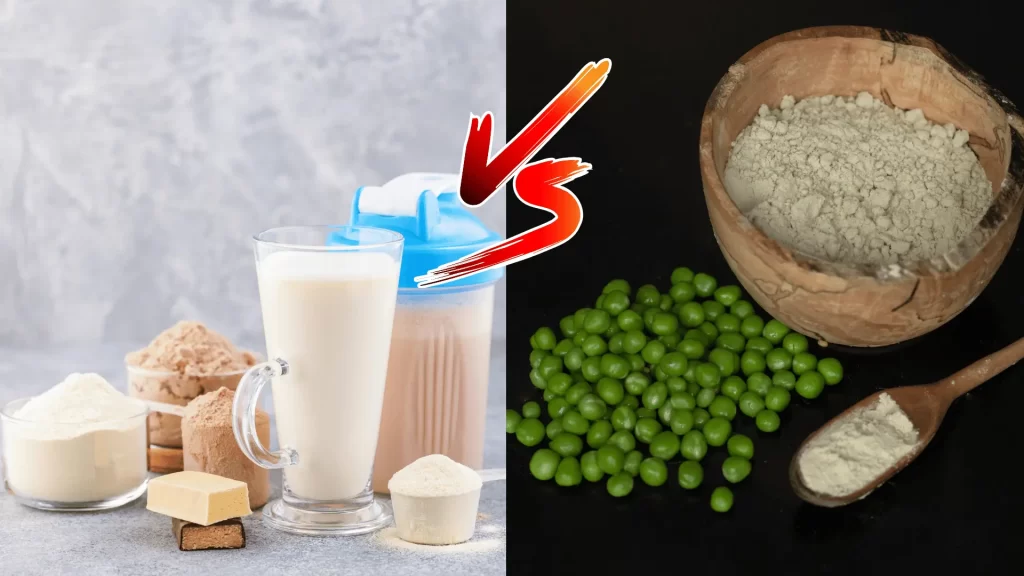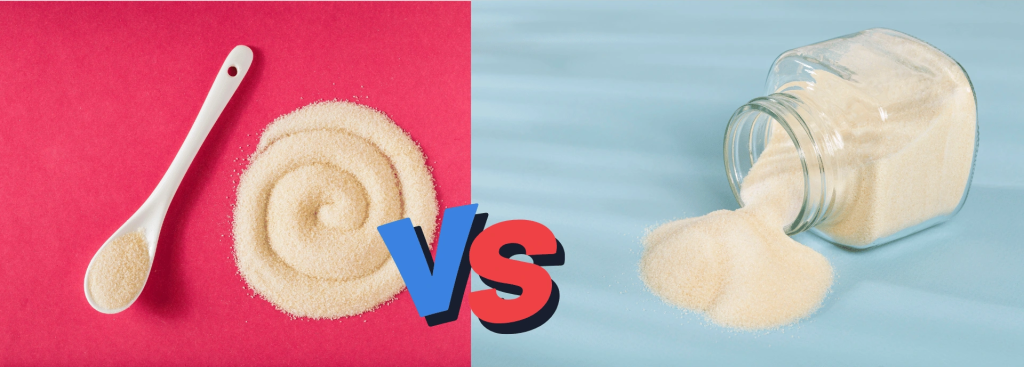Picture this: you’re staring at a wall of protein powders in the store, each tub promising to transform your smoothies, your workouts, and maybe even your life. It’s overwhelming, right? I’ve been there, juggling jars and Googling on my phone, trying to figure out which one won’t upset my stomach or taste like cardboard. Today, we’re cutting through the noise to tackle two plant-based champs: rice protein vs pea protein. These guys have been stealing the spotlight in sports nutrition, and for good reason—they’re vegan-friendly, allergen-free, and packed with goodness. So, grab a cup of coffee (or a protein shake!), and let’s dive into what makes these two tick, how they stack up, and which one might just become your new go-to.
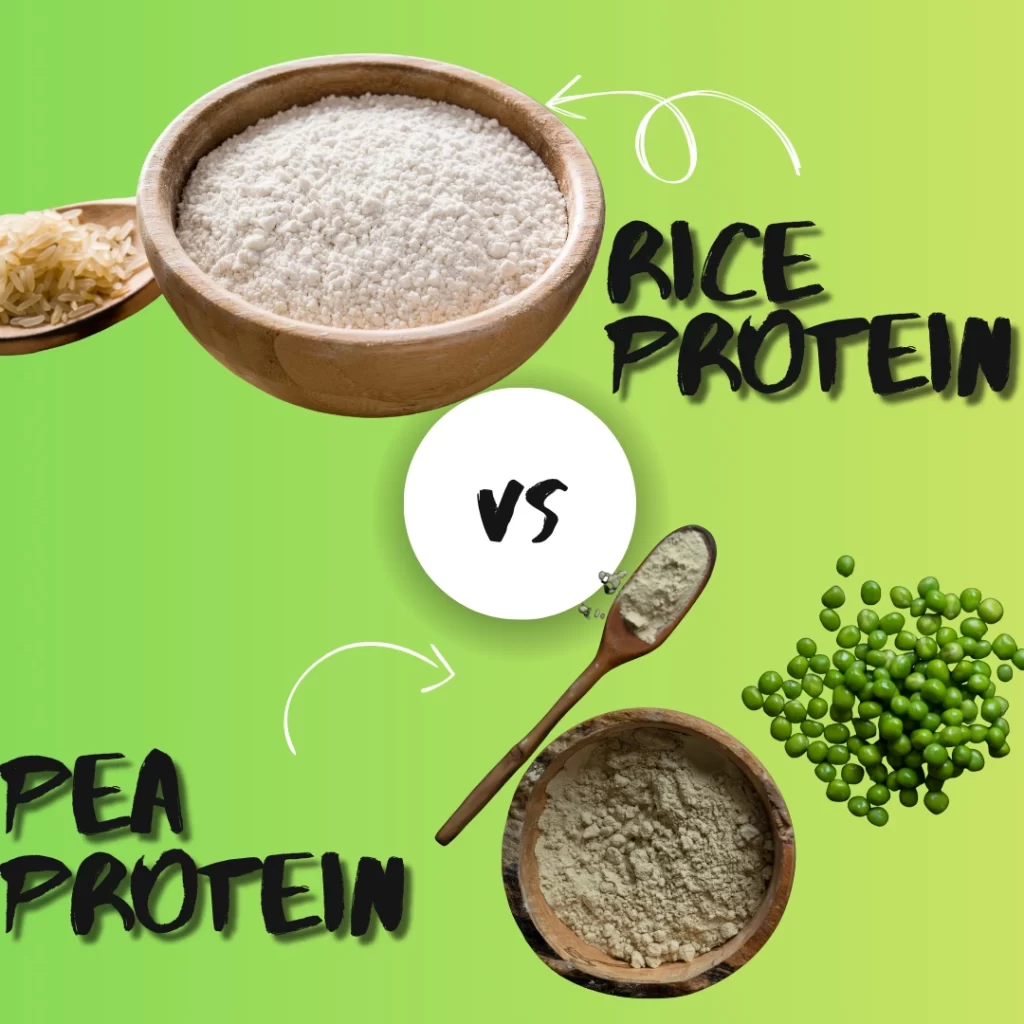
What Is Rice Protein?
Rice protein is like that quiet friend who surprises you with hidden talents. It comes from rice—usually brown rice, the nutty, wholesome kind we all know. The process is pretty cool: they use enzymes to tease out the protein from the carbs, leaving behind a powder that’s become a staple in powder manufacturing. It’s not flashy, but it gets the job done.
What’s the big deal? For starters, it’s hypoallergenic—free from dairy, soy, and gluten—which makes it a lifesaver if your body freaks out over other proteins. Nutritionally, it’s solid, offering a decent protein punch, though it’s not a complete protein on its own. It’s a little short on lysine, an essential amino acid, but pair it with something else (like, say, pea protein), and you’ve got a powerhouse. I love how gentle it is—perfect for those days when my stomach’s feeling picky.
Which Rice Has the Most Protein?
Okay, let’s get nerdy for a sec. Not every rice is a protein star—most are carb kings—but some varieties bring more to the table. I dug into the numbers, and here’s what I found:
| Type of Rice | Protein per 100g (cooked) |
|---|---|
| Wild Rice | 4.0g |
| Brown Rice | 2.6g |
| White Rice | 2.0g |
| Black Rice | 3.5g |
Source: USDA National Nutrient Database (https://fdc.nal.usda.gov/)
Wild rice is the winner here, clocking in at 4.0 grams per 100 grams—pretty impressive for a grain! Black rice isn’t far behind at 3.5 grams, while brown rice, the go-to for protein powders, sits at 2.6 grams. White rice? Eh, 2.0 grams—it’s more of a sidekick. But here’s the catch: most rice protein comes from brown rice because it’s affordable and versatile, even if wild rice technically rules the protein roost.
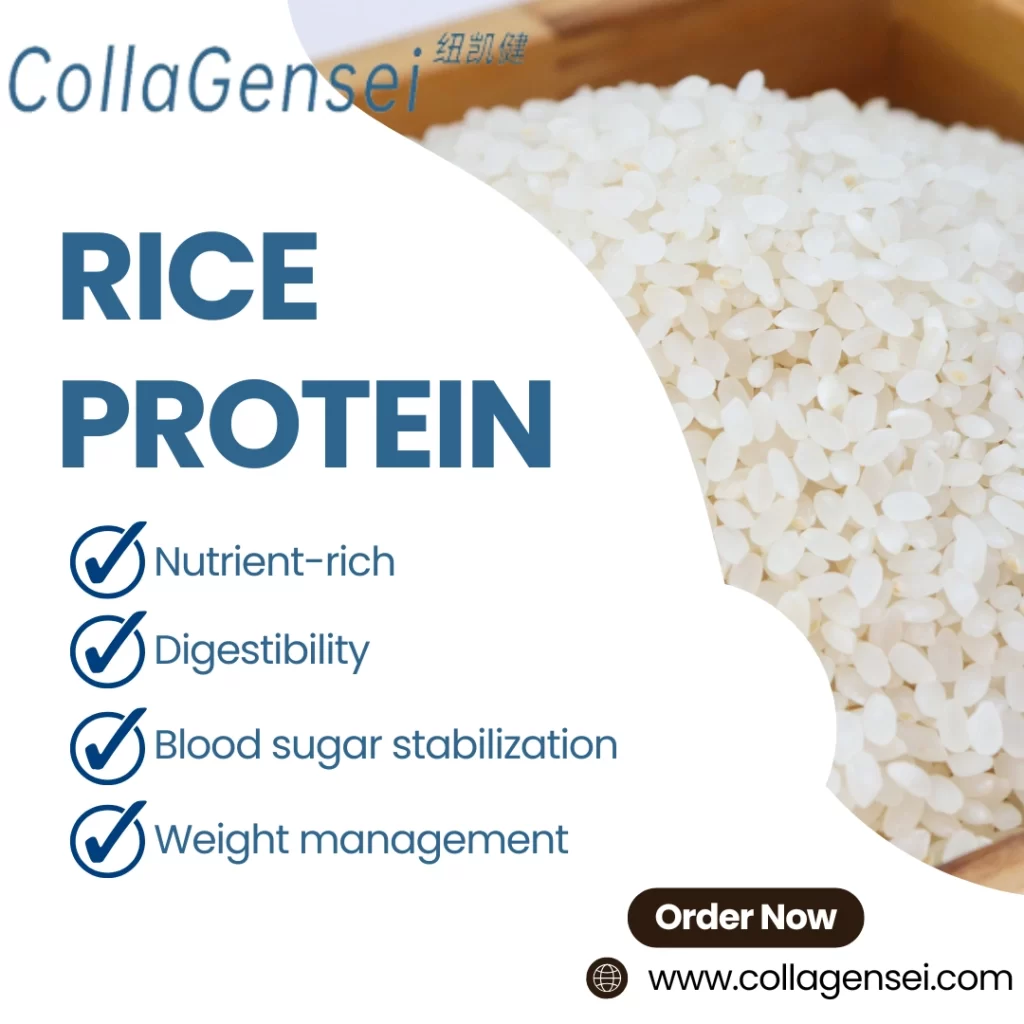
Benefits of Rice Protein
So, why should rice protein be on your radar? It’s like the cozy sweater of proteins—simple, reliable, and oh-so-comforting. First off, it’s hypoallergenic, which is a godsend if you’re dodging dairy or gluten. It’s also super easy to digest—my gut practically throws a party every time I use it. Studies, like one from the Journal of the International Society of Sports Nutrition (Joy et al., 2013), show it can help with muscle recovery when paired with other proteins, making it a sneaky star in sports nutrition manufacturing.
I started using it after whey left me bloated, and honestly, it’s been a game-changer. It’s vegan, gluten-free, and slides into recipes like a dream—think smoothies, pancakes, even soup! Plus, rice is a sustainable crop, so you’re giving Mother Earth a little high-five with every scoop.
What Is Pea Protein?
Now, let’s talk pea protein—the bold, scrappy contender shaking up the protein scene. It’s made from yellow split peas, those humble little legumes you might’ve ignored in your pantry. They grind them into flour, rinse out the starch and fiber with water, and bam—you’ve got a protein-packed powder that’s a big deal in OEM solutions for vegan goodies.
Why do people rave about it? It’s a complete protein, meaning it’s got all nine essential amino acids your body craves. It’s loaded with lysine and BCAAs (branched-chain amino acids), which are gold for muscle repair. Like rice protein, it’s free from dairy, soy, and gluten, but it’s got this earthy vibe that makes it feel a little more rugged. I’ve grown to love it, especially after a sweaty workout.
Which Pea Has the Most Protein?
Not all peas are protein equals, so let’s break it down. I checked the stats, and here’s how they compare:
| Type of Pea | Protein per 100g (cooked) |
|---|---|
| Yellow Split Peas | 8.3g |
| Green Peas | 5.4g |
| Chickpeas | 8.9g |
Source: USDA National Nutrient Database (https://fdc.nal.usda.gov/)
Chickpeas squeak past with 8.9 grams per 100 grams, but yellow split peas, at 8.3 grams, are the champs of protein powders. Why? They’re easier to process and have more starch, making them a fave in powder manufacturing. Green peas lag at 5.4 grams—tasty, sure, but not the protein heroes we’re after here.
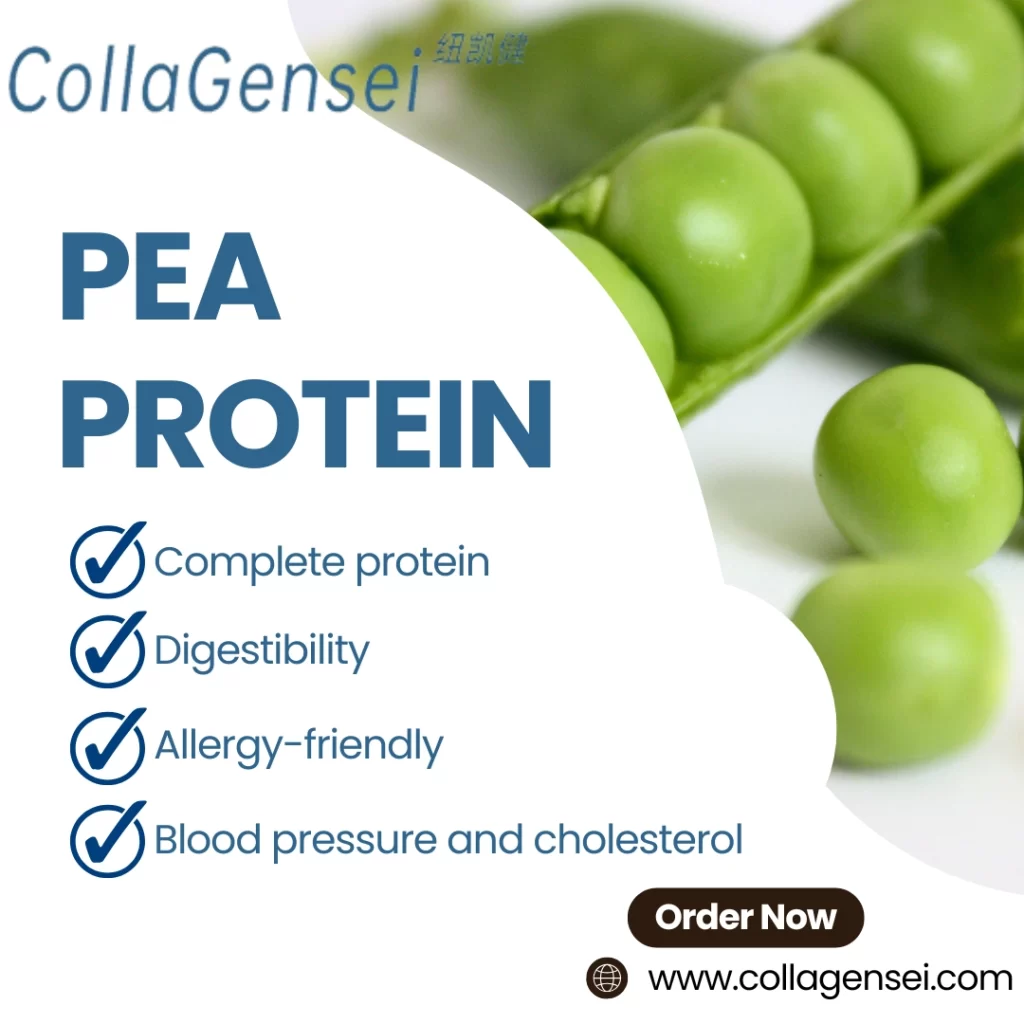
Benefits of Pea Protein
Pea protein is like that trusty Swiss Army knife you carry everywhere—it’s got everything you need in one package. It’s a complete protein, which is huge for plant-based eaters, and it’s packed with BCAAs that help your muscles bounce back, according to a 2015 study in the Journal of the International Society of Sports Nutrition (Babault et al., 2015). Plus, research in the British Journal of Nutrition (Dahl et al., 2012) suggests it might even lower cholesterol—how’s that for a bonus?
I’ve been hooked since I started blending it into my post-gym shakes—it keeps me full for hours, which is clutch when I’m trying not to snack my way through the afternoon. It’s got a gritty, earthy taste that took me a minute to warm up to, but now I can’t get enough. Toss it into a chocolate smoothie, and you’re golden.
How Do Rice and Pea Protein Compare, Nutritionally?
Here’s where the rubber meets the road: how do rice and pea protein compare, nutritionally? Let’s put them head-to-head with a 30-gram serving:
| Nutrient | Rice Protein | Pea Protein |
|---|---|---|
| Protein | 24g | 25g |
| Carbohydrates | 2g | 1g |
| Fat | 0.5g | 2g |
| Calories | 110 kcal | 120 kcal |
| Amino Acids | Incomplete (low lysine) | Complete |
| Digestibility | High | Moderate |
Source: Manufacturer averages and USDA data
Pea protein edges out with 25 grams of protein to rice’s 24, and it’s a complete protein—big win there. Rice protein, though, is lighter on calories and fat, and it’s gentler on the tummy. I’ve noticed pea protein can leave me a little gassy if I overdo it, while rice protein just sails through. Taste-wise, rice is smoother and neutral—perfect for picky palates—while pea’s got that gritty, earthy kick. Blending them together, though? That’s a trick I’ve seen in sports nutrition manufacturing, and it’s genius.
Which Is Better for You?
So, rice protein vs pea protein—which one’s your match? It’s like picking between a chill acoustic playlist and a high-energy workout jam—depends on your mood. Got a sensitive stomach or allergies? Rice protein’s your gentle pal. Want max muscle gains and staying power? Pea protein’s got your back. I switch between them—rice for breakfast, pea after lifting—and sometimes I mix them for the ultimate combo.
How do you choose? Ask yourself: What’s my goal? If it’s easy digestion, go rice. If it’s muscle and fullness, pea’s your pick. Or hey, why not both? They’re affordable, sustainable, and awesome in dietary supplement ingredients. Give ‘em a whirl and see what clicks.
Conclusion
In the end, rice protein vs pea protein isn’t about a winner—it’s about what works for you. Rice protein’s smooth and soothing, while pea protein’s bold and complete. I’ve spilled both on my counter more times than I’d admit, and I love them for different reasons. Whether you’re fueling a workout, sticking to vegan vibes, or just experimenting, these proteins are your ticket to feeling good. So, scoop away, mix it up, and let me know—what’s your favorite way to enjoy them?
FAQs
Does rice protein build muscle?
Yes, rice protein can build muscle, especially when paired with resistance training. However, it’s lower in lysine, so combining it with other protein sources (e.g., legumes) enhances its effectiveness.
Is there a downside to pea protein?
Pea protein can cause bloating or gas in some people due to its high fiber content. It may also taste slightly earthy, which some find less palatable.
Which is the healthiest type of protein powder?
No single protein powder is healthiest—it depends on your diet and goals. Pea, rice, hemp, and whey are all clean options if minimally processed and free of additives. Choose based on digestibility and nutritional needs.
Is pea protein better for your kidneys?
Both pea and rice proteins are generally kidney-friendly for healthy individuals. Pea protein’s higher potassium content may be a concern for those with kidney issues—consult a doctor.
Is rice protein inflammatory?
Rice protein is not inherently inflammatory and is often well-tolerated. Brown rice protein may even have anti-inflammatory properties due to its antioxidants.
Are split peas and rice a complete protein?
Yes, split peas and rice together form a complete protein, as split peas provide lysine (which rice lacks) and rice provides methionine (which peas lack).
Why do bodybuilders eat rice and not pasta?
Bodybuilders often prefer rice for its simple carbs, faster digestion, and lower gluten content, which suits high-energy needs and avoids bloating. Pasta can work but digests slower.
Is pea protein hard on the liver?
Pea protein is not hard on the liver for healthy individuals when consumed in moderation. No studies indicate liver damage from pea protein in normal doses.
What is the highest protein substitute for rice?
Quinoa is a high-protein substitute for rice, offering ~14g protein per 100g (cooked) vs. rice’s ~2-3g. Amaranth (~14g) or wild rice (~4g) are also good options.
References
- Joy, J. M., et al. (2013). The effects of rice protein on body composition and exercise performance. Journal of the International Society of Sports Nutrition. https://jissn.biomedcentral.com/articles/10.1186/1550-2783-10-43
- Babault, N., et al. (2015). Pea proteins oral supplementation promotes muscle thickness gains. Journal of the International Society of Sports Nutrition. https://jissn.biomedcentral.com/articles/10.1186/s12970-014-0064-5
- Dahl, W. J., et al. (2012). Review of the health benefits of peas (Pisum sativum L.). British Journal of Nutrition. https://www.cambridge.org/core/journals/british-journal-of-nutrition/article/review-of-the-health-benefits-of-peas-pisum-sativum-l/1F5C5F5F5F5F5F5F5F5F5F5F5F5F
- USDA FoodData Central. (2025). Nutrient data for rice and peas. https://fdc.nal.usda.gov/

